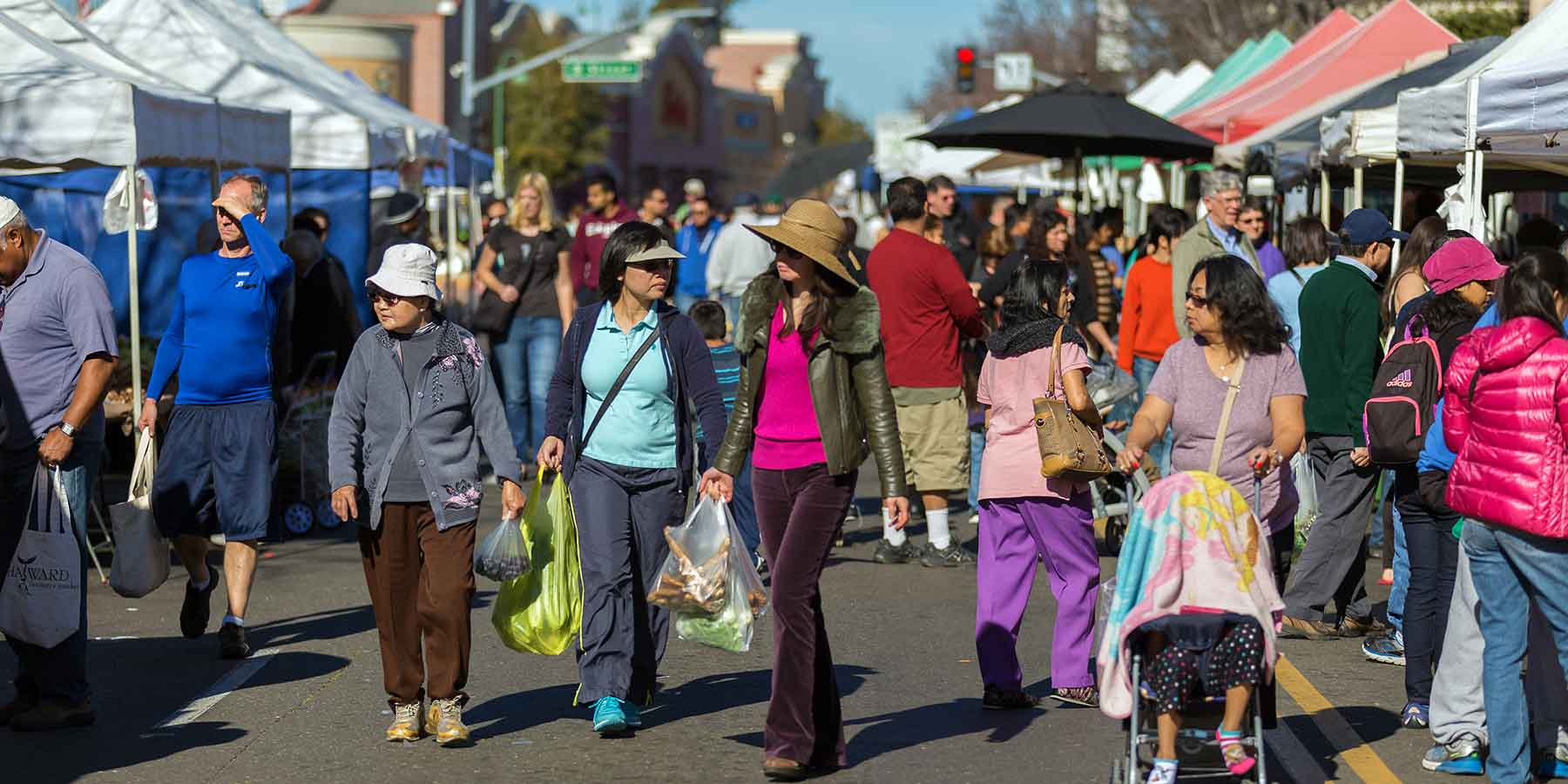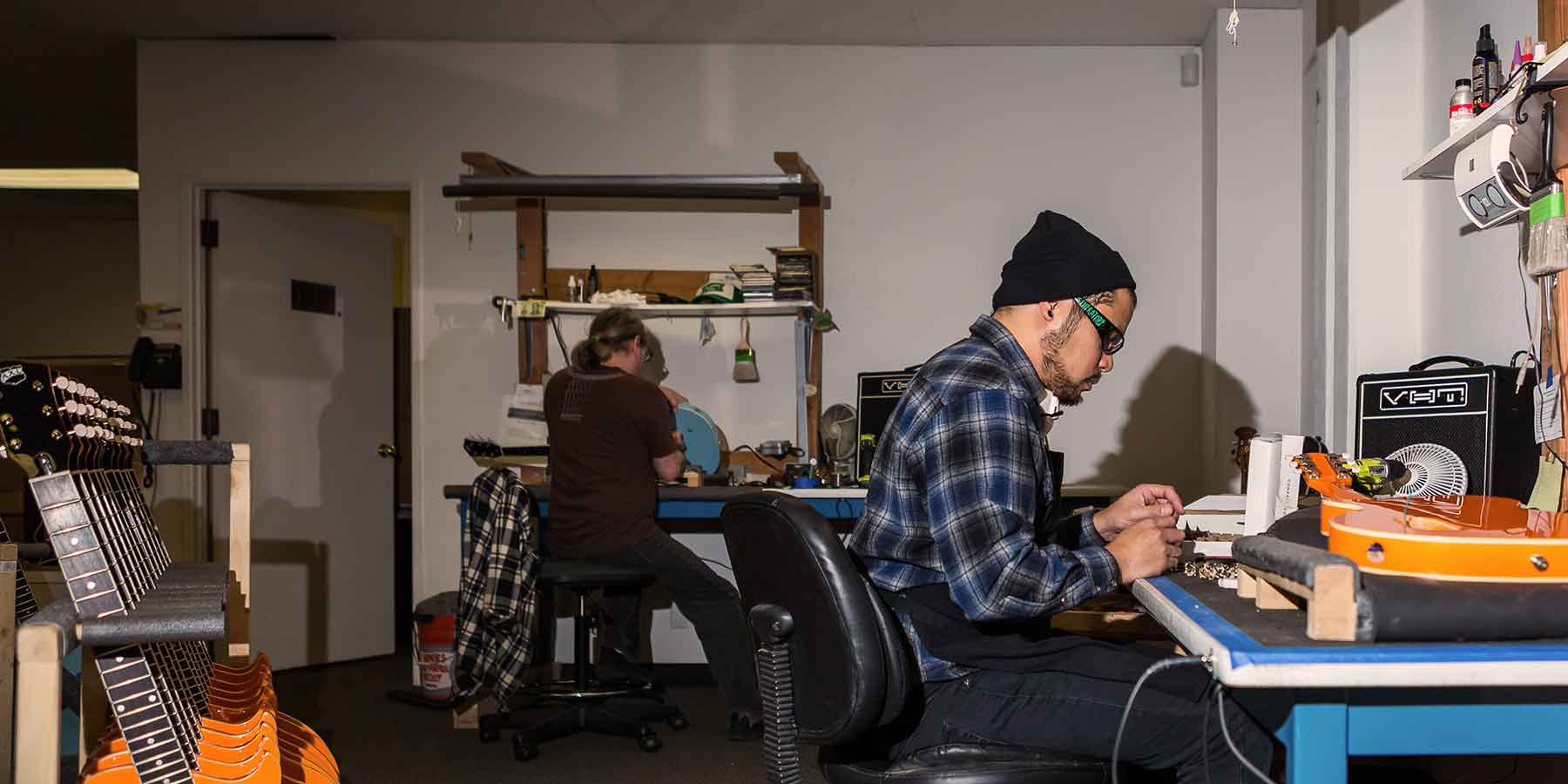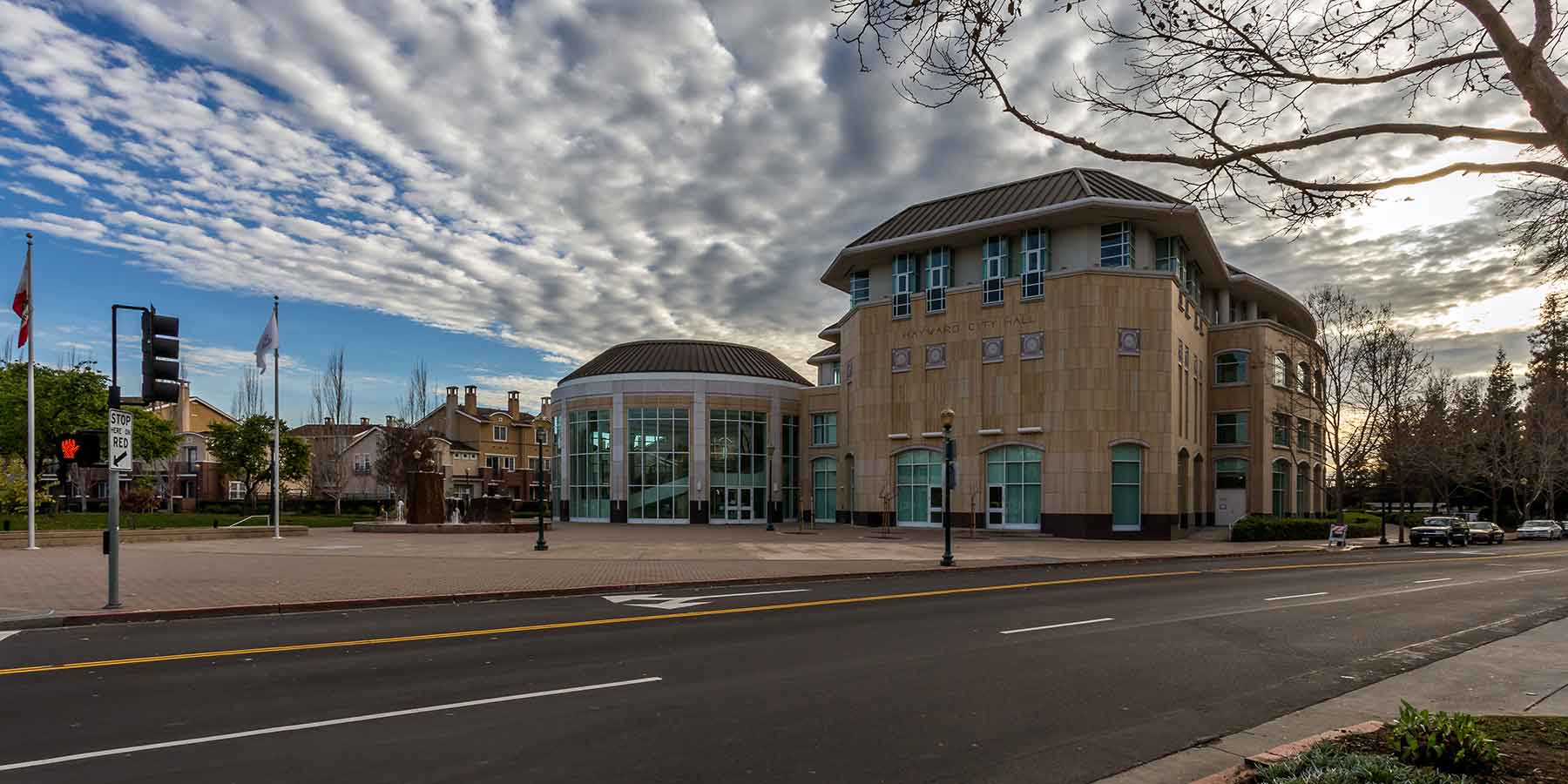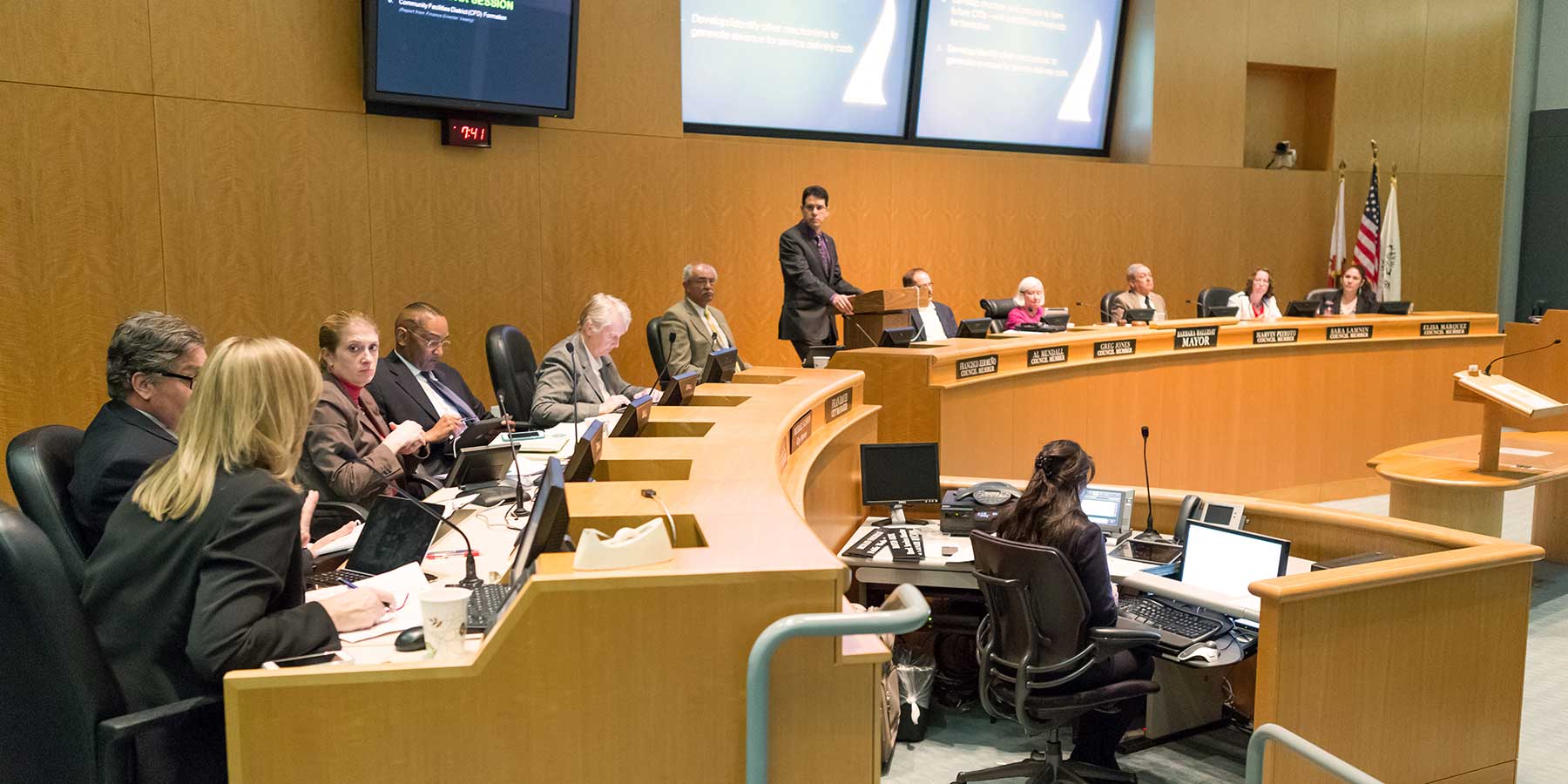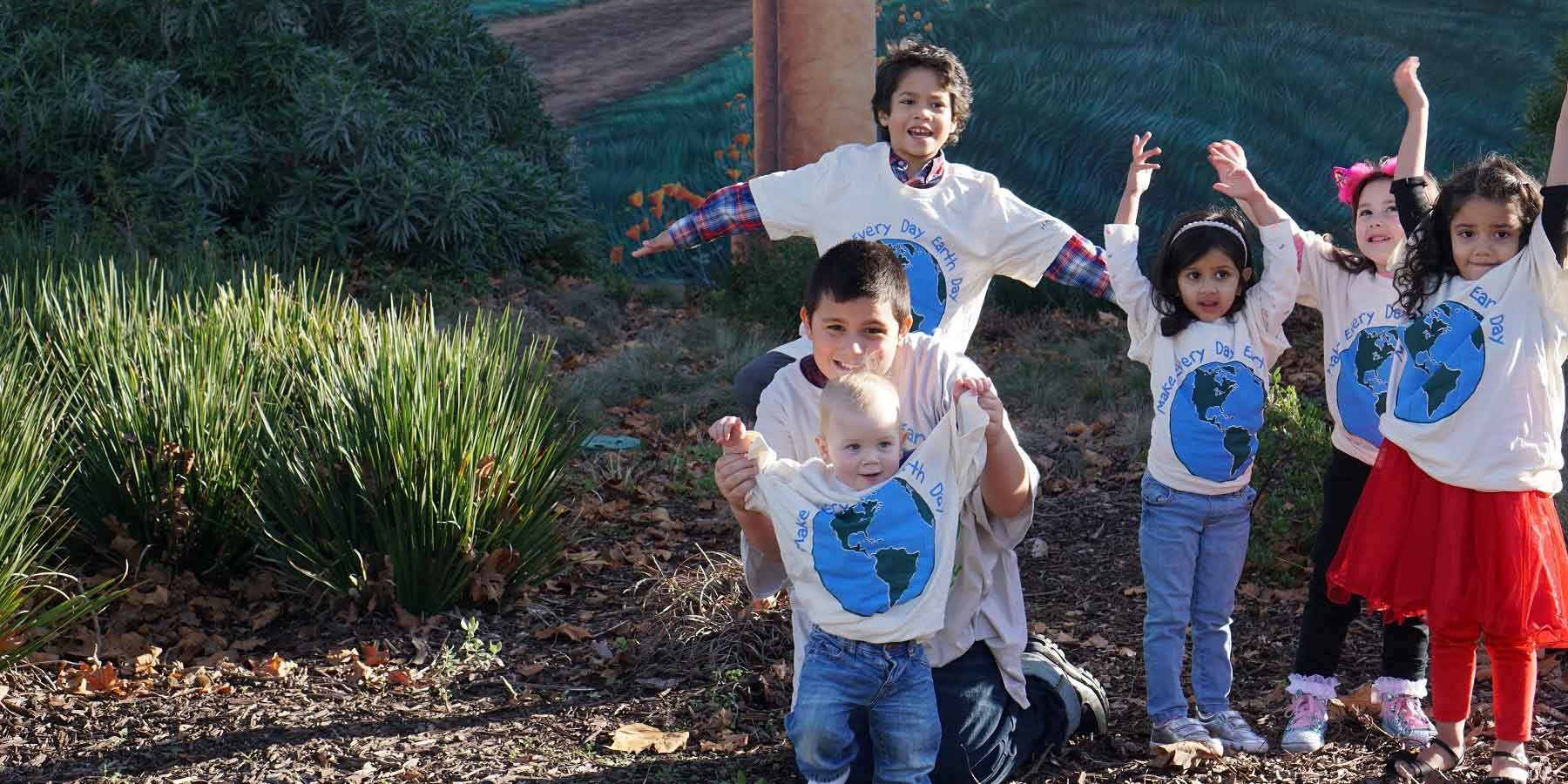Solid Waste Sector Measures
Sustainable solid waste management is a critical component to a healthy and inclusive community. Hayward defines zero waste as an ongoing set of practices to conserve resources and protect humans and the environment by responsibly producing, consuming, reusing, and recovering food and goods. Striving toward zero waste can create climate benefits beyond Hayward’s borders and the measures in this section support Hayward’s overall goal of working toward zero waste of resources.
The City has a goal of attaining a 75 percent communitywide waste diversion from the landfill and is exploring adopting the Alameda County Waste Management Authority’s goal of eventual landfill obsolescence. Working toward zero waste requires two main strategies. First, maximizing waste diversion (including recycling and composting) and second, minimizing waste generation. Through Measure solid waste (SW)-1, the City will implement and enforce SB 1383 requirements to reduce communitywide landfilled organics 75 percent by 2025 and 90 percent by 2045.Measure SW-2 will ensure that City increases communitywide overall landfill diversion of waste to 75 percent by 2030 and 85 percent by 2045.
Less Waste to Landfill
Minimizing the amount of organic waste, including yard and food waste, sent to landfills will help the City achieve its climate goals because methane released from landfilled organic waste is the main source of waste related GHG emissions from the community. Actions for reducing organic waste to the landfill are already clearly defined by State requirements under SB 1383, which lay out specific programs, policies, and objectives for the City to support the State goal. Under SB 1383, cities are required to rescue edible food, divert organic waste from landfill, and procure compost and/or other materials from recycled organic waste.
To support this, Hayward also seeks to reduce inorganic waste (such as plastic, paper, and metal) going to landfill.
Waste Prevention
The best way to manage waste is to prevent it in the first place. This is because creating items and disposing of them as waste requires raw materials, time, energy, and other resources, which can all be conserved when waste is prevented. In addition, not all waste is reusable or recyclable, so the best way to keep it out of landfill as technologies develop is prevention.
The GHG emissions produced during the production and transportation of goods prior to their consumption are referred to as lifecycle emissions. Usually, these emissions exceed any emissions generated within Hayward from local waste disposal. While recycling and waste recovery play a role in preventing landfill accumulation, they do not tackle the lifecycle emissions and additional costs associated with material production.
To make progress towards zero waste and reduce GHG emissions as much as possible, Hayward will prioritize waste prevention so that waste can be eliminated at the source before management and disposal are necessary. Although actions that address inorganic waste will have a minimal impact toward meeting Hayward’s communitywide GHG emissions reduction goals, reducing inorganic waste reduces the need for production and disposal of these materials. As a result, this will curtail the lifecycle emissions linked to the waste beyond Hayward’s borders.
Measures & Actions Detail
Measure SW-1: Implement and enforce SB 1383 requirements to reduce community-wide landfilled organics 75% by 2025 and 90% by 2045.
Actions, co-benefits, City costs, community costs, and specific quantitative GHG emissions reductions associated with implementation of Measure SW-1 are included in Table 24.
Table 24: Measure SW-1 Actions
ACTION ID | ACTION DESCRIPTION |
|---|---|
| SW 1.1 | Adopt procurement policies to comply with SB 1383 requirements for jurisdictions to purchase recovered organic waste products. Key Pillar: Structural Change |
| SW 1.2 | Continue to implement exclusive hauling agreement with Waste Management of Alameda County (WMAC) that regulates haulers collecting organic waste, including collection program requirements and identification of organic waste receiving facilities. Key Pillar: Structural Change |
| SW 1.3 | Continue to implement edible food recovery ordinance for edible food generators, food recovery services, or organizations that are required to comply with SB 1383. Ordinance requires all residential and commercial customers to subscribe to an organic waste collection program and/or report self-hauling or backhauling of organics. Key Pillar: Structural Change |
| SW 1.4 | Implement enforcement and fee for incorrectly sorted materials with sensitivity to shared collection. Utilize funding to implement programs and efforts to increase communitywide organic waste diversion. Key Pillar: Structural Change |
| SW 1.5 | Work with StopWaste to conduct targeted outreach with food recovery organizations, generators, haulers, facilities, and local agencies to promote strategies to implement requirements of SB 1383 Key Pillar: Education |
| SW 1.6 | Encourage businesses to educate their employees about organic waste diversion and proper sorting annually by providing training resources and rebate programs to fund employee time for training. Key Pillar: Education |
| SW 1.7 | Partner with local community organizations, public agencies like StopWaste and businesses to implement all required activities under SB 1383. Key Pillar: Partnership |
| SW 1.8 | Provide free compost bins and kitchen-top food waste containers to low-income communities of colors and elderly households in order to increase compost participation. Evaluate opportunities to have a community compost hub that is easily accessible to disadvantaged neighborhoods. Key Pillar: Equity |
| SW 1.9 | Establish relationships with multi-family property owners/managers to develop signage for their properties. Present at Homeowner Associations in Hayward annually and provide supplies and education for proper sorting. Key Pillar: Equity |
| SW 1.10 | Establish an edible food recovery program to minimize food waste. Leverage CalRecycle supports projects that prevent food waste or rescue edible food. Partner with existing food pantries like CSUEB, South Hayward Parish to identify and advertise locations for surplus food to be taken in the community. Key Pillar: Partnership |
| SW 1.11 | Work with contracted hauler to: • Provide quarterly route reviews to identify prohibited contaminants potentially found in containers that are collected along route. • Clearly label all new containers indicating which materials are accepted in each container, and by January 1, 2024, place or replace labels on all containers. • Develop and implement a comprehensive monitoring and quality control program with a focus on consumer behavior change. Key Pillar: Partnership |
| SW 1.12 | Partner with schools, retirement communities, and other large institutions to create waste diversion and prevention program/procedure/plan. Key Pillar: Partnerships |
| SW 1.13 | Work with local organizations, StopWaste, and investigate various funding/grant opportunities to fund edible food recovery organizations so they can expand and handle increased volume. Key Pillar: Partnership/Funding |
| SW 1.14 | Partner with StopWaste to conduct a feasibility study and identify next steps to ensure edible food reuse infrastructure in Hayward is sufficient to accept capacity needed to recover 20% of edible food disposed of within Hayward. Key Pillar: Feasibility Studies/Partnership |
| Total GHG Emissions Reduction from Measure: 2030: 35,925 MT CO2e, 2045: 47,101 MT CO2e | |
| City Cost: Moderate | |
| Community Cost: Moderate | |
| Co-Benefits: Environmental Quality & Ecosystem Services, Jobs Development | |
Measure SW-2: Increase communitywide overall landfill diversion of waste to 75% by 2030 and 85% by 2045. Actions, co-benefits, City costs, community costs, and specific quantitative GHG emissions reductions associated with implementation of Measure SW-2 in Table 25.
Table 25: Measure SW-2 Actions
ACTION ID | ACTION DESCRIPTION |
|---|---|
| SW 2.1 | Continue to implement the Organics Reduction and Recycling Ordinance (ORRO) adopted in November 2021 in alignment with the Countywide ORRO ordinance. Support StopWaste and County Environmental Health in the enforcement of the ORRO within the City. Key Pillar: Structural Change |
| SW 2.2 | Review recent circular economy bills signed by the governor (i.e., SB 343, AB 881, AB 1201, AB 962, AB 1276) and incorporate requirements into hauling agreements, and municipal codes for full-service restaurants and local manufacturing businesses. Key Pillar: Structural Change |
| SW 2.3 | Continue to enforce the Hayward Construction and Demolition Debris Recycling Ordinance. Key Pillar: Structural Change |
| SW 2.4 | Adopt a citywide Zero Waste Goal and develop a Zero Waste Strategic Plan to increase diversion from the landfill by 85% 2045. Key Pillar: Structural Change |
| SW 2.5 | Create a requirement for large events to hire an event waste management team. Key Pillar: Structural Change |
| SW 2.6 | Regularly evaluate and update new franchise agreement with Waste Management of Alameda County to meet SB 1383 requirements and to implement new components to further divert waste from landfills. Work with WMAC to determine data necessary to meet zero waste goals and establish protocol for regular collection and reporting of associated metrics. Identify dedicated staff responsible for this. Key Pillar: Partnership |
| SW 2.7 | Require food service providers to implement a fee for single-use food ware. Key Pillar: Structural Change/ Funding |
| SW 2.8 | Partner with StopWaste to conduct targeted, multi-lingual, culturally appropriate, and geographically diverse waste prevention educational and technical assistance campaigns based on outcomes of a waste characterization study (WCS). Such as food waste prevention, edible food recovery strategies, proper storage, how to fix clothes/electronics, how to donate, reusable alternatives, effects of over consumption, sustainable consumption habits, buying second hand, buying durable, sharing, repurposing. Continue to conduct outreach regarding AB 1276 to full-service restaurants. Key Pillar: Education/Equity |
| SW 2.9 | Continue to work with StopWaste and haulers to monitor participation in residential recycling programs, create education materials for the community, provide technical assistance to business to implement mandatory recycling, and identify other opportunities and means to promote zero waste efforts. Key Pillar: Partnership |
| SW 2.10 | Work with StopWaste and the business community to design and promote extended producer responsibility such as take-back programs. Key Pillar: Partnership |
| SW 2.11 | Conduct a consumption-based GHG emissions inventory to understand the community’s worst consumption habits and emission reduction potential and provide educational materials on a closed-loop circular economy. Key Pillar: Feasibility Study |
| SW 2.12 | Work with local businesses to establish post-consumer recycled content requirements that meet SB 343 recyclability claims as part of their purchasing criteria. Key Pillar: Structural Change |
| SW 2.13 | Partner with local organizations, schools, and libraries to establish pop-up repair cafes for commonly broken and easily repaired items. Partner with library to promote reuse by increasing accessibility to shared tools through a tool lending library. Key Pillar: Partnership/Equity |
| SW 2.14 | Based on existing StopWaste waste characterization studies and Litterati litter assessment, increase bans on "problem materials" (i.e., items without means of recycling or recycling markets, such as sale of polystyrene, plastic packaging, straws, plastics #4-7, mixed materials). Enforce the single-use plastic pre- checkout ban, by January 1, 2025, in alignment with SB 1046. Key Pillar: Structural Change |
| SW 2.15 | Explore funding opportunities to increase the circular food economy. Key Pillar: Funding |
| Total GHG Emissions Reduction from Measure: Supportive Measure & Actions | |
| City Cost: Moderate | |
| Community Cost: Moderate | |
| Co-Benefits: Environmental Quality & Ecosystem Services | |



